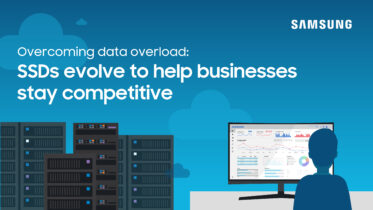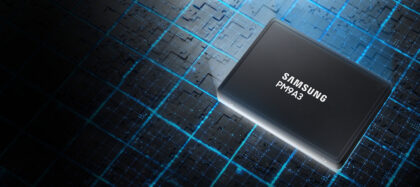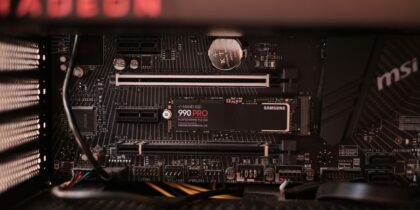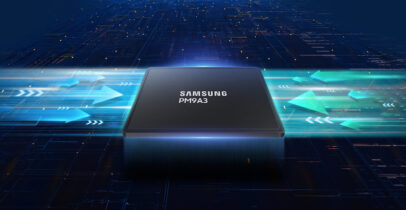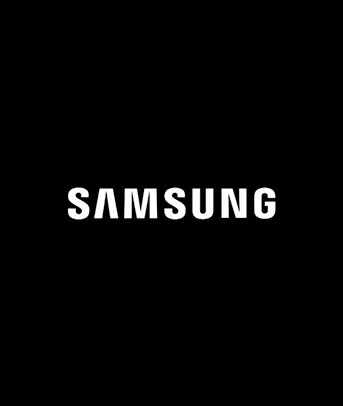Developing cutting-edge gaming PCs and console games today means optimizing them with solid state drives (SSDs), which enable faster load times, improved graphics and smoother gameplay. In fact, many of the top games now require SSDs to even function, including “Starfield,” “Baldur’s Gate 3” and “Assassin’s Creed Mirage.”
Gaming PCs with SSDs have been the norm for years. After all, prices for SSDs have dropped, and many gamers have recognized the superior technology SSDs bring to the table. Game console makers have also made SSDs a standard to support improved performance and storage. Microsoft’s Xbox Series S and X and Sony PlayStation 5 now come with NVMe®-based SSDs.
Here’s why SSDs are better than hard disk drives (HDDs) for gaming, how game developers are taking advantage of SSDs to transform modern game design and how gamers can get in on the action.
SSD vs HDD: Why solid state improves gaming
SSDs, unlike HDDs, have no mechanical moving parts and use flash memory for storage. This means they have much faster read/write speeds and are more reliable, quieter and energy-efficient.
On the gaming front, SSDs boot up systems and load games much faster than HDDs, which translates to less time waiting to get into a game, fewer agonizing loading screens and best of all, less lag in gameplay. In fact, SSDs speed load times of games by up to 60% compared to high-performance HDDs, according to Eurogamer1.
These advantages become increasingly important as games get larger in size. For example, the PlayStation 5 starts up the 100GB action-adventure game “The Last of Us Part II” in 15 seconds, more than twice as fast as a PlayStation 4 with an HDD. The load time from menu to gameplay is also faster: one minute on the PlayStation 5 versus one minute and 28 seconds on the PlayStation 4, according to Tom’s Guide.
Get your complete guide to SSD management
Discover how to effectively adopt and manage SSDs in your organization with this ultimate guide. Download Now
While SSDs don’t increase frame rates, they do speed up load time when players enter new areas in games, even when there aren’t loading screens. SSDs eliminate hitches that can occur when players enter new locations, preventing interruptions during gameplay.
Not all SSDs are created equal
Even low-cost SATA SSDs will boot up and load games faster than HDDs, but new NVMe SSDs — also known as SSDs with the M.2 form factor — will provide even faster performance. NVMe is a high-speed transport protocol that transfers data between SSDs and other system components significantly faster than the SATA and SAS protocols, which were created when HDDs and tape dominated storage. According to Enterprise Storage Forum2, NVMe drives can be up to 35 times faster than SATA SSDs.
A good example is Samsung 990 PRO NVMe SSD, which supports the latest PCIe® 4.0 interface and provides read/write speeds of 7,450/6,900 MB/s — significantly higher than PCIe 3.0 SSDs. Another example is Samsung 990 EVO, which supports the most recent PCIe 5.0 interface and provides read/write speeds of 5,000/4,200 MB/s. In contrast, even the fastest, most modern HDD can only reach speeds of 286.8/279.3 MB/s, according to TechRadar3.
SSD benefits for game designers
Given all of the advantages of SSDs, it’s no surprise that game developers are taking full advantage of them in their game design, supporting larger games, faster boot and load times, better graphics and more immersive environments. In fact, The Verge4 asked its readers to “pour one out” for HHDs because of the sheer number of game developers — and games — that now require SSDs.
That same article highlighted Microsoft’s Xbox Games Showcase announcement that its newest game, “Starfield,” would require 125GB of SSD storage to play. CD Projekt Red5 also revealed that the Cyberpunk 2077 series requires an SSD at minimum. “Final Fantasy XVI” producer Naoki Yoshida says SSDs will be essential for playing the PC version of the game, scheduled for release at some point in 2024. These developers are following in the footsteps of similar previous announcements.
Game developer Playground Games said SSDs on the new Xbox Series X and S transformed game design and allowed them to improve the quality of graphics in their new “Forza Horizon 5” game, as the developers no longer needed to worry about load times. Gareth Harwood, the technical art director at Playground Games6, noted that without the limitations of a spinning disk, the game allows a higher texture resolution than ever thought possible
Samsung SSDs are best in class for gamers and game designers
Samsung 990 PRO NVMe — available in 1TB, 2TB and 4TB configurations — is the perfect SSD for gaming on PCs and consoles alike. Not only does it have blazing fast speeds, but it also offers the high capacity gamers need, including for multiple game saves. It’s also durable enough for long, intense play sessions.
The SSD is built with specially written software, Dynamic Thermal Guard, which monitors the operating temperature and adjusts performance on the fly to ensure the device doesn’t overheat. In addition, its M.2 compact form factor is optimized for power efficiency.
While Samsung 990 PRO NVMe was built for gaming PCs and laptops, it’s also compatible with the PlayStation 5. In fact, Tom’s Hardware calls Samsung 990 PRO the fastest drive for the Sony PlayStation 5 that money can buy. Adding this increases the available storage space on your PS5 console, which allows free movement among games on the console’s storage, a connected USB extended storage device and any installed M.2 SSD.
In numerous contexts, Samsung 990 PRO NVMe delivers the fast speeds, large storage capacity and reliability that cutting-edge gaming needs, all in a small package.
Learn more about how CPU, GPU and SSD work together in a gaming PC and what Samsung SSDs are available for gamers.
1 Eurogamer. “Best SSD for PC gaming 2024: shorter loading times, smoother streaming.” February 22, 2024.
2 Enterprise Storage Forum. “Comparing SSD vs HDD Speed: Which Is Faster?” November 22, 2023.
3 TechRadar. “Fastest hard drive of 2024.” February 12, 2024.
4 The Verge. “Pour one out for HDDs because PC games are starting to require SSDs.” June 15, 2023.
5 PC Gamer. “RIP to hard drives: SSDs only for Cyberpunk 2077: Phantom Liberty.” September 20, 2023.
6 PCGamesN. “How gaming SSDs transform Forza Horizon 5’s graphics quality and game design.” November 5, 2021.



